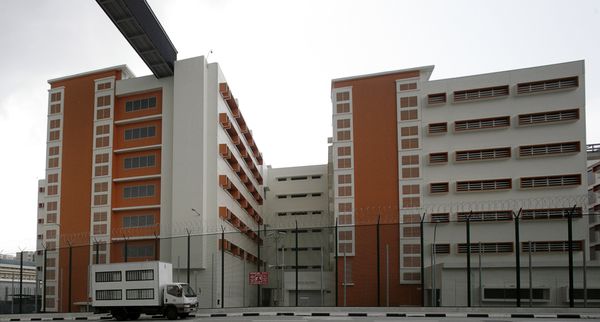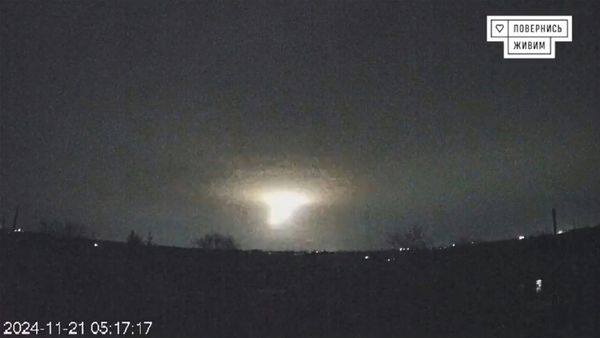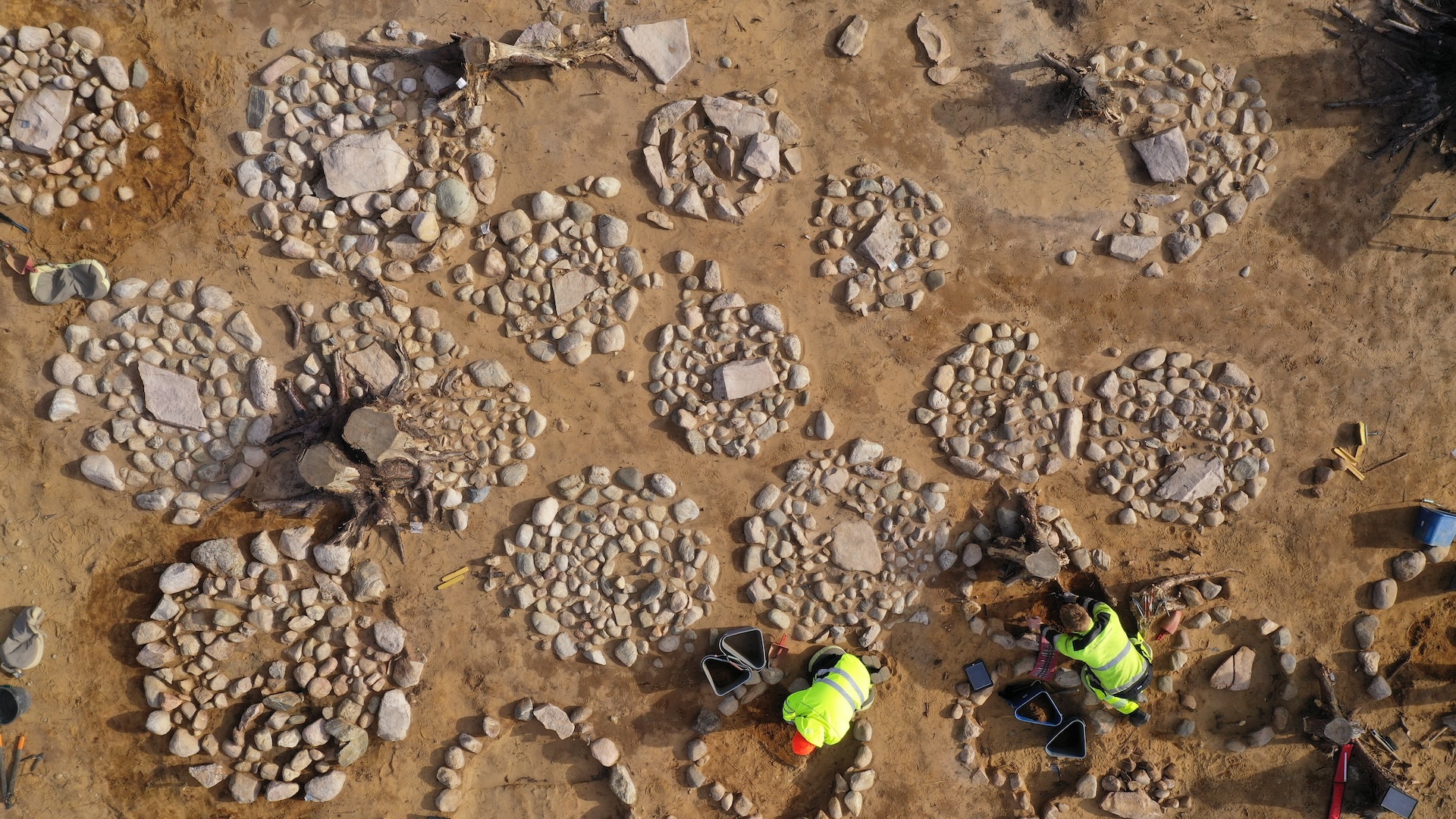
Archaeologists are mystified by the discovery of dozens of Bronze and Iron Age graves of children in southern Norway.
The burials, each marked by circles of meticulously placed stones, were found by a team from Norway's Museum of Cultural History last year near Fredrikstad, about 50 miles (80 kilometers) south of Oslo, near the Swedish border.
"They've lain here as a secret until we found them," museum archaeologist Guro Fossum told Science Norway. "We uncovered one after another and ended up with 41 round stone formations."
The circles of stones, which measure up to 6 feet (2 meters) across, were placed together like street cobblestones but were buried a few inches below the surface.
Several circles were placed around a large, central stone, and further investigations revealed burned bones and pottery shards beneath those stones.
Related: Burial of infant 'Neve' may be oldest of its kind in Europe
Now, a new analysis shows that almost all of the burials contained children who died between 800 and 200 B.C. Many of the children were infants, and others ranged from 3 to 6 years old.
"The dating show that the burial site was used over a long period, so they couldn't all have died in the same natural disaster or outbreak of disease or epidemic," Fossum said.
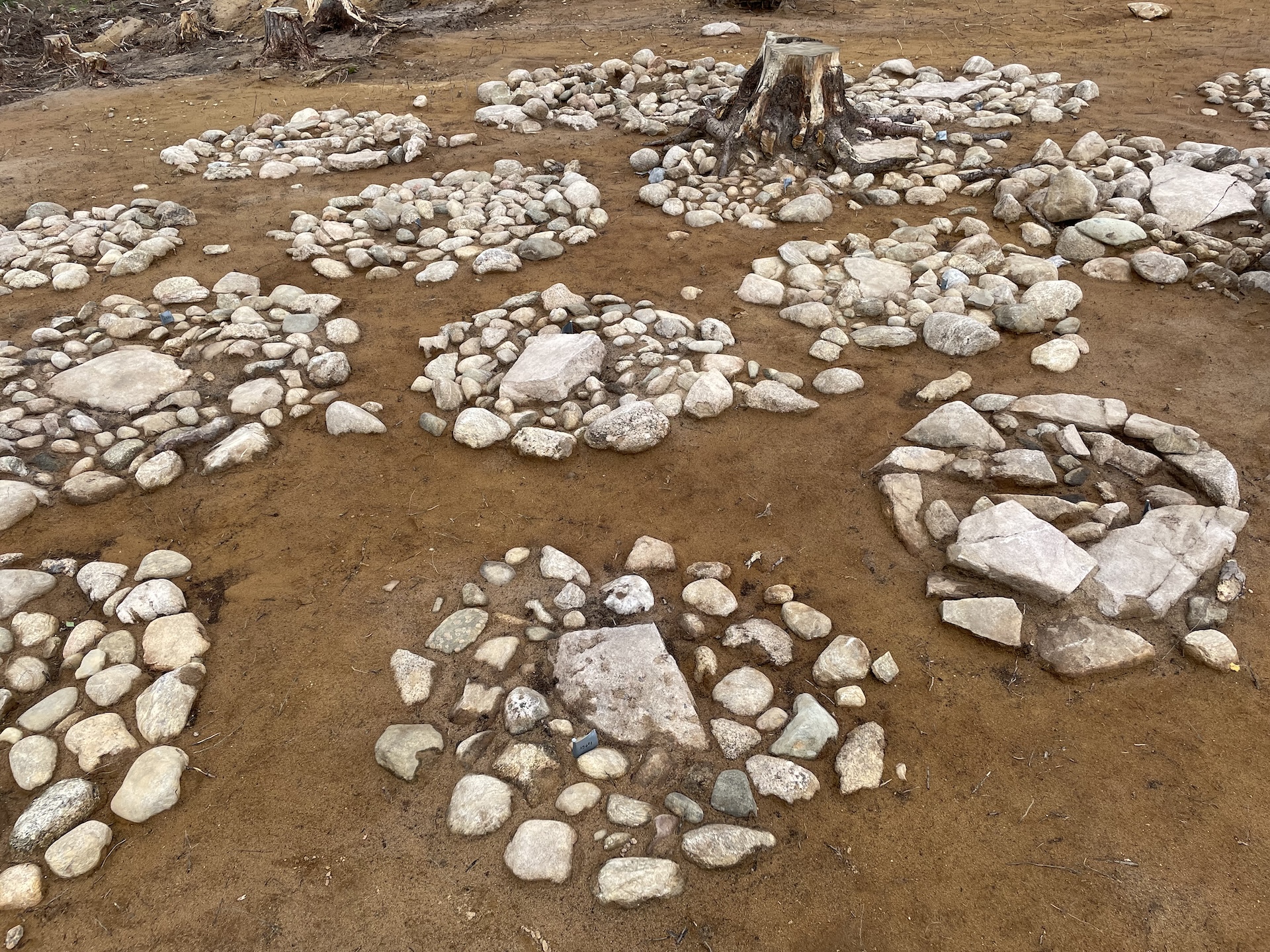
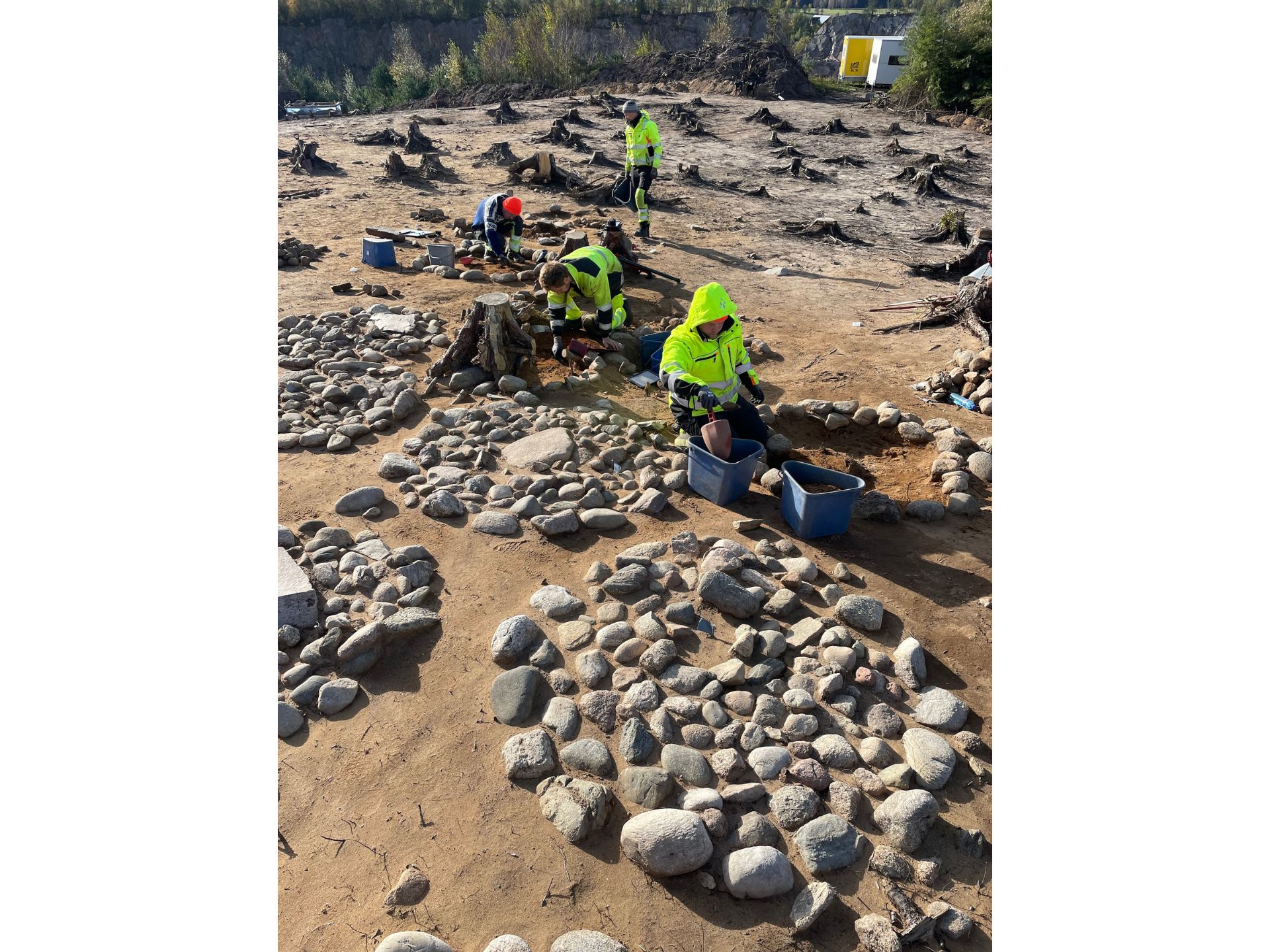
Unique site
Such a concentration of the ancient graves of children is unique in Europe, according to a statement from the museum.
The area surrounding the burial ground is dotted with rock carvings that describe voyages and sun worship, according to the statement.
Experts noted that the rate of infant mortality was probably high at that time, but otherwise, they have no explanation for the children's graves.
After securing important samples from the site and photographing it extensively, the archaeologists covered their excavations, the website reported. However, one of the stone formations will soon be featured in an exhibition titled "In Memory of the Children" at the Cultural History museum in Oslo.
Archaeologists also plan to analyze the artifacts from the site, which include pieces of pottery and what may be a metal brooch.
"Analyses of the pottery fragments can tell us a lot," Fossum said. "It doesn't appear that all the vessels were containers for burnt bones; some were placed between the graves, and we are very curious about what was inside them."
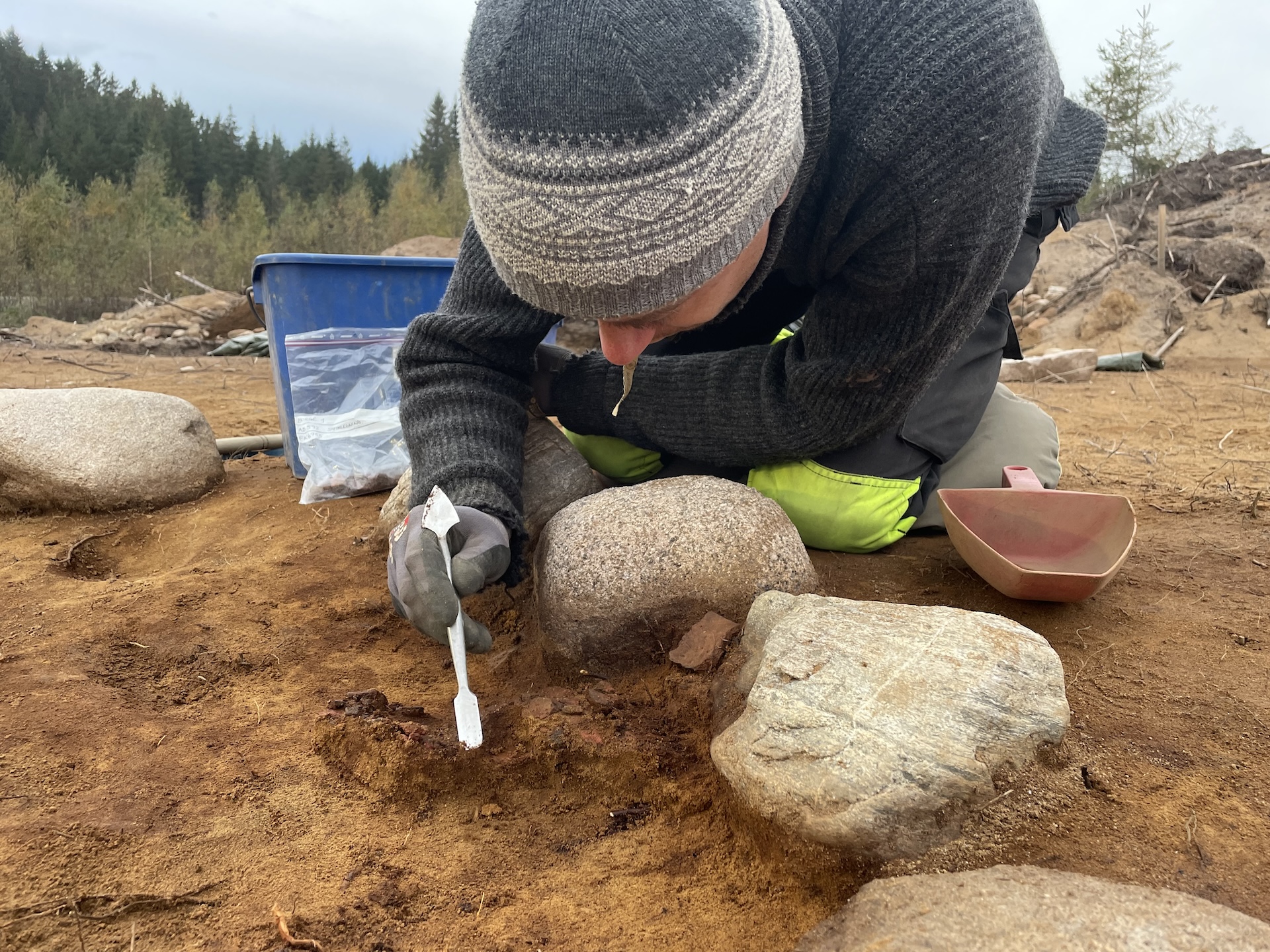
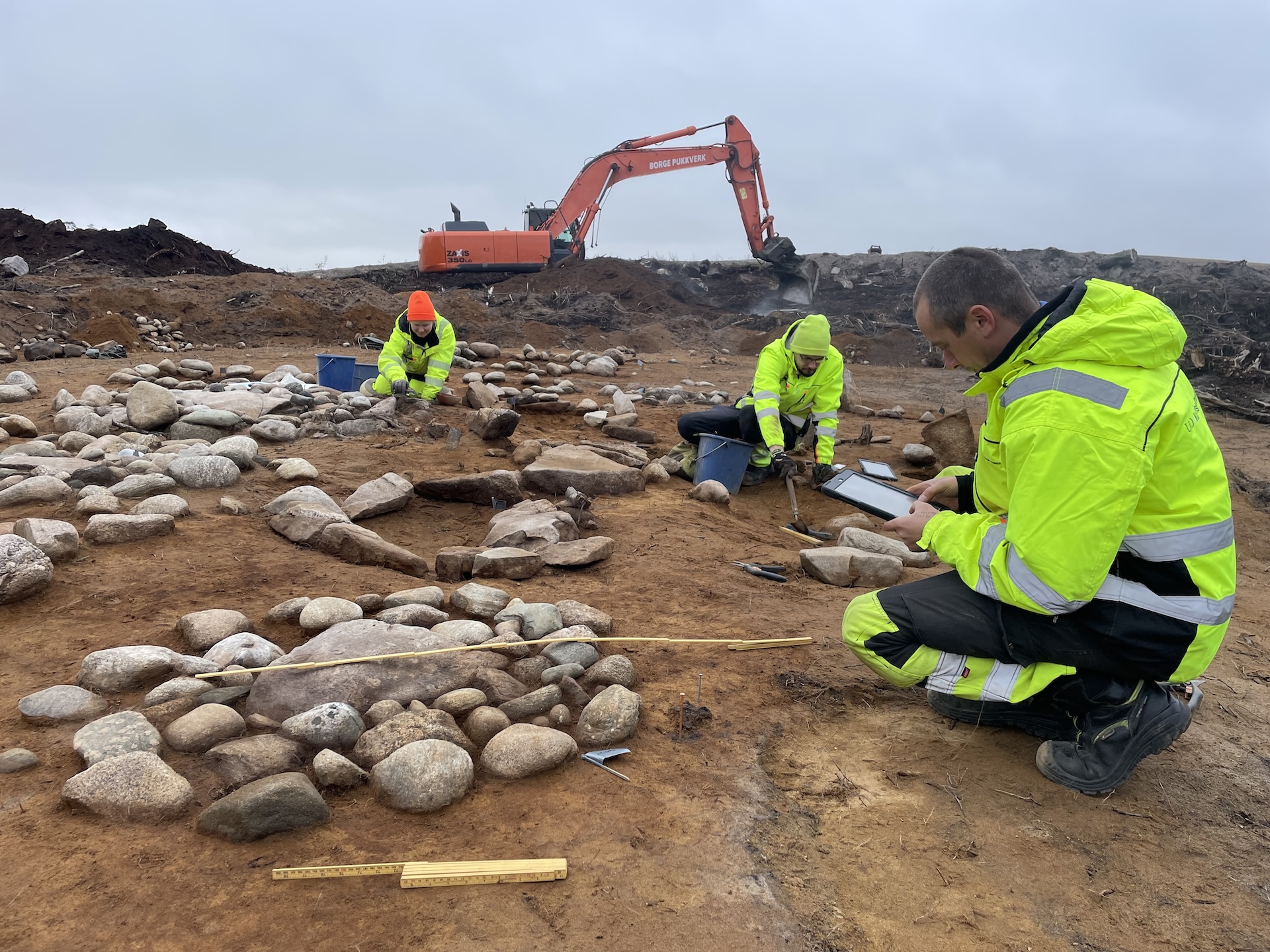
Accidental discovery
Archaeologists discovered the burial ground after investigating a Stone Age settlement nearby, Fossum said.
During the Nordic Bronze and Iron ages, it was common to cremate the dead on pyres and either bury or scatter any bones that remained, Fossum said. A flat layer of stones in a spiral or wheel pattern was then often built over the cremation site, she said.
But the burial site at Fredrikstad is unusual. "The graves are very close together," Fossum said. "They must have been in an open landscape, with thoroughfares nearby, so everyone would have known about them. Cooking pits and fireplaces around the site suggest that gatherings and ceremonies were held in connection with burials."
In addition, the graves were meticulously crafted. "Each stone was sourced from a different location and placed precisely in the formation," Fossum said. "We wondered who put in so much effort."
The answer came with the revelation that most of the dead were children. "They were small children's graves," she said. "This was done with so much care."
